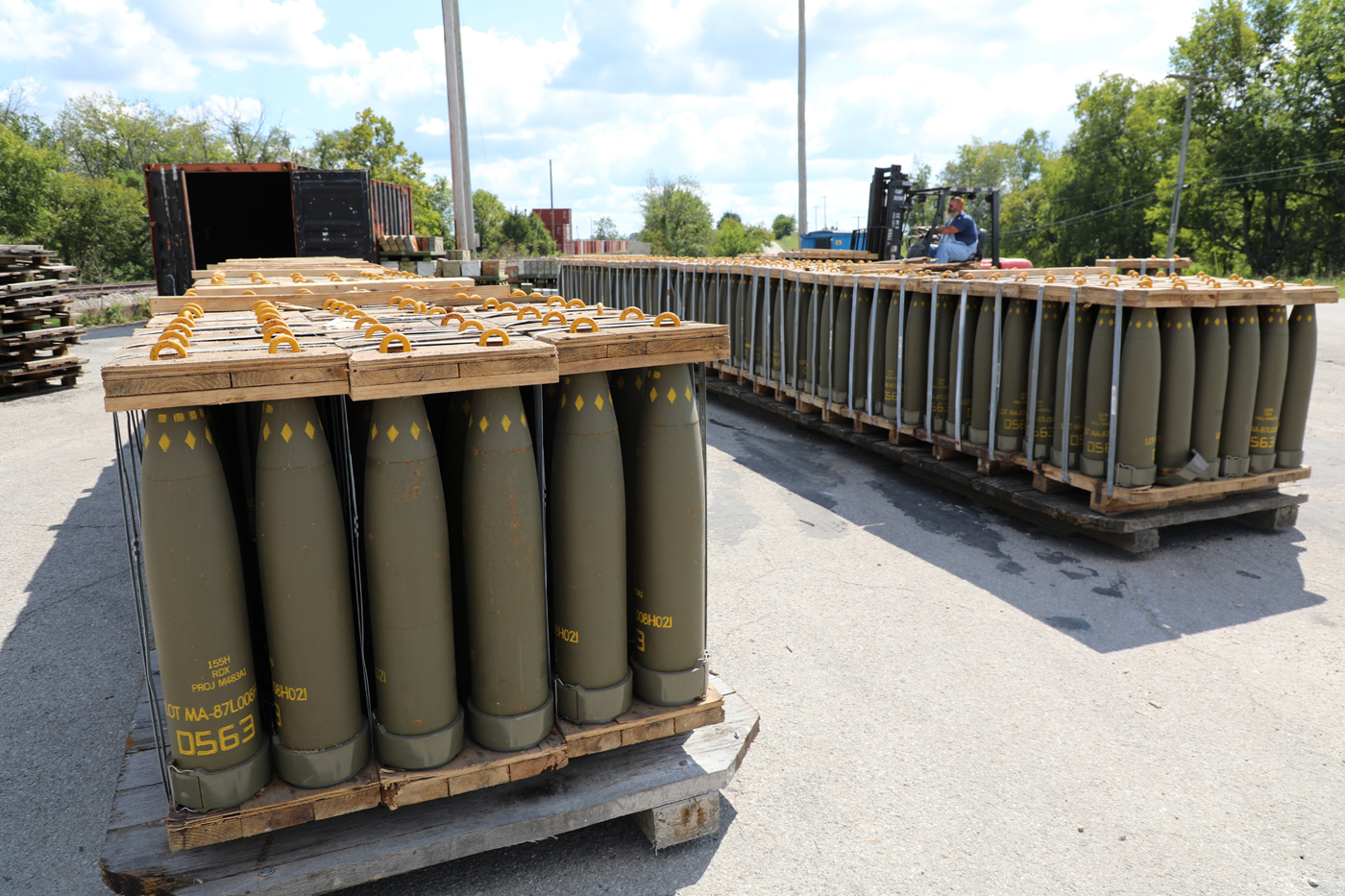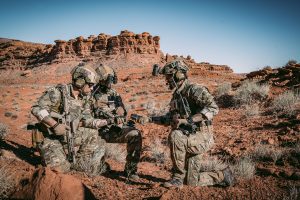Ukrainian artillery crews fire 6,000 rounds daily while facing 60,000 incoming Russian shells. This 10:1 disadvantage persists despite billions in Western aid because Russia produces seven times as many artillery shells as the entire West combined. Recent intelligence estimates confirm Russia is producing about 250,000 artillery munitions per month while the US and Europe can only generate about 1.2 million munitions annually, combined. America’s vaunted “Arsenal of Democracy” that supplied Allied forces throughout World War II has withered to dangerous inadequacy.
The end of the Cold War eliminated Soviet threats and with them, justification for maintaining massive military industrial capacity. Companies consolidated to reduce costs while preserving baseline capability. This approach worked during counterinsurgency operations where low intensity conflicts required limited industrial support. Russia and China have shattered these assumptions.
Decades of defense contractor mergers stifled both innovation and production capacity while creating dangerous vulnerabilities. Pentagon analysis reveals that since the 1990s, the defense sector has consolidated substantially, transitioning from 51 down to 5 aerospace and defense prime contractors. The Pentagon sources up to 40% of its semiconductors from China, the same nation threatening Taiwan and building forces specifically designed to counter American military advantages. Supply chain analysis shows that key imports from China are significantly more volatile than those from stable G7 partners, creating dangerous dependencies in critical technologies.
Our rivals study our systems extensively, then rapidly develop asymmetric counters to neutralize new weapons and tactics. They understand that defeating American technological advantages requires disrupting our production and supply chains rather than matching our capabilities system for system.
The current defense industrial ecosystem concentrates production among fewer prime contractors while pushing specialized suppliers to the margins. This concentration creates single points of failure where disruption of one facility can cripple entire weapons programs. Small suppliers with critical expertise disappear through acquisition or simply exit defense markets due to regulatory burden and unpredictable demand cycles. Companies optimize for lobbying and compliance rather than battlefield effectiveness, focusing on meeting specification requirements rather than solving operational problems that emerge during combat.
This system fails catastrophically when conflicts demand rapid adaptation and surge production. The procurement cycle operates on timelines measured in years while battlefield requirements evolve in weeks. By the time new systems reach operational units, threats have adapted, and countermeasures have proliferated throughout adversary forces.
America cannot recreate the industrial behemoths of the 20th century, nor should we attempt such an approach. Today’s security environment demands flexible, responsive, technologically driven industry capable of rapid battlefield adaptation and continuous innovation cycles.
The defense industrial model that served America during World War II relied on converting massive civilian manufacturing capacity to military production. Detroit’s automotive assembly lines became tank factories. This conversion model worked because military equipment shared fundamental technologies with civilian products. Modern military systems require specialized technologies that have limited civilian applications, making it so traditional conversion strategies offer limited utility for contemporary defense challenges.
Strategic capital allocation toward dual use technologies offers the most promising path forward. Military industries dependent solely on government funding lack competitive pressure that drives innovation and economic viability. Market competition forces continuous improvement, cost reduction, and performance optimization in ways that government contracts cannot replicate.
We must invest strategically in existing technologies and industries that promise independent market success while simultaneously answering critical defense needs. Artificial intelligence development serves both commercial and military applications. Advanced manufacturing techniques improve both civilian and defense production. Communications technologies enhance both commercial networks and military command systems.
Effective defense market intelligence demands comprehensive collection, analysis, and sharing of data across multiple domains: geopolitical trends, industrial capacity assessments, supply chain vulnerability mapping, and technological development tracking. This systematic approach enables rapid identification of both critical risks and emerging opportunities before they become strategic crises.
Current intelligence capabilities focus primarily on traditional threats, while economic intelligence receives insufficient attention despite its fundamental importance for long term strategic competition. This intelligence system must track global manufacturing capacity across critical defense technologies, identify chokepoints where adversaries could disrupt American production, and monitor technological developments that could provide competitive advantages or create new vulnerabilities.
The 20th century model used existing industry as an engine for national defense during wartime mobilization. The 21st century reverses this relationship: we must reinvest in national industries during peacetime, building them up to perform when national security demands surge capacity without lengthy mobilization periods.
Success requires connecting Pentagon requirements with American industrial innovation in ways that create resilient, competitive enterprises rather than dependent defense contractors. Current industrial base weaknesses represent strategic vulnerabilities that enemies will exploit during extended conflicts. Ukraine demonstrates how production capacity, not just technological superiority, determines battlefield outcomes.
America’s industrial renaissance requires sustained political commitment and strategic investment guided by operational realities rather than political convenience. Support SOAA’s mission to translate frontline insights into actionable policy. Join our newsletter for ground truth analysis on defense industrial issues, or contact Congress to demand strategic investments in America’s manufacturing future.
The Arsenal of Democracy built victory in World War II. Today’s Arsenal of Innovation must secure America’s competitive advantage in the conflicts ahead.
Photo: Ammo handler at Blue Grass Army Depot prepares 155mm projectile rounds for repalletization.





